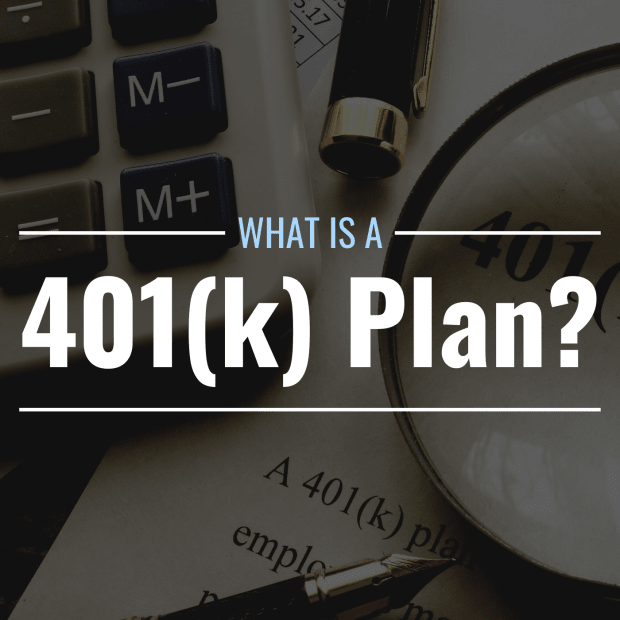
What Is a 401(k) Account?
A 401(k) is an employer-sponsored retirement-savings account into which a worker can divert some of their earnings from each paycheck on a pre-tax basis. In other words, an employee’s contributions to their 401(k) account come out of their paycheck but do not count toward their taxable income for the year.
In many cases, employers match employee contributions up to a certain percentage of each paycheck. The funds in a worker’s 401(k) account are then invested in financial instruments like ETFs and mutual funds on their behalf by the account’s administrator. Ideally, these investments grow over time via capital gains and interest. Once an employee turns 59 and a half, they can begin withdrawing funds from their 401(k) to fund their retirement.
How Does Employer Matching Work?
Some employers offer to match employees’ 401(k) contributions up to a certain percentage of their paycheck each pay period. For instance, if an employer offers a 3% 401(k) match, and an employee chooses to divert 3% of each paycheck to their 401(k), their employer would contribute an amount equivalent to 3% of that employee’s paycheck to their 401(k) account each pay period. If the same employee diverted 5%, the company would still only contribute an amount equivalent to 3% of their paycheck. If the same employee only diverted 2% of each paycheck into the account, the company would match only their 2% contribution.
When employers offer a matching program, employees stand to benefit the most by contributing the maximum percentage their company is willing to match from each paycheck. This way, each investment they make is essentially doubled via their employer’s matching contribution.
How Are 401(k) Funds Invested?
The funds in an employee’s 401(k) are invested via its service provider (e.g., Fidelity, Charles Schwabb, etc.) into a variety of securities, including ETFs and mutual funds that may contain stocks, bonds, and, in some cases, even commodities like gold and crude oil.
In many cases, 401(k) accounts automatically invest an employee’s contributions in a pre-set array of securities optimized for diversification and a moderate balance of risk and potential upside. In most cases, however, employees can also choose to customize how their contributions are allocated across any number of financial instruments offered by their 401(k) provider to optimize their portfolio for growth, dividend income, or other financial goals.
How Are 401(k) Funds Taxed When They Are Withdrawn?
Once an employee turns 59.5 years old, the funds in their 401(k), which ideally have grown via capital gains and compounding interest, can be withdrawn. At this time, they are subject to ordinary income tax. Many retirees fall into a lower tax bracket than they would have when they were employed, however, so the account holder may enjoy a lower tax rate than they would have if the funds were taxed when they were added to the account.
Additionally, qualified 401(k) withdrawals are not subject to capital gains tax despite the fact that a 401(k) is an investment account, and the funds within are used by the account’s administrator to purchase gain-creating securities like stocks, bonds, ETFs, and mutual funds until they are eventually withdrawn during retirement. This means that 401(k) holders do not have to pay a special tax on their capital gains like they would have to if the gains came from a normal investment account.
Traditional vs. Roth 401(k)s: What Are the Differences?
Some employers offer Roth 401(k)s in addition to the traditional sort. If this is the case, employees can usually choose one or the other or split their contributions between the two. So, how do these two 401(k) accounts differ?
With a traditional 401(k), an employee gets to contribute to their retirement without paying any current income taxes on the earnings they divert into the account. A Roth 401(k) shifts the tax advantages to the withdrawal end of the equation. With a Roth, an employee does pay income tax on the money they divert into their account, but when it comes time to withdraw these funds during retirement, no income taxes (or capital gains taxes) are charged so long as the account has been open for 5+ years and the account holder is 59.5+ years old.
So, which type of 401(k) is better? That depends on when you want to pay taxes. Roth 401(k)s are often recommended to younger employees in lower tax brackets, as it’s assumed the income tax they pay on contributions now will be comparatively smaller than what they might owe upon withdrawal if they end up in a higher tax bracket by the end of their career.
In reality, both account types have their advantages, and there’s no harm in having one of each. Meeting with a financial advisor is a great way to get additional clarity about which account type might be best for your individual situation.
401(k)s vs. Individual Retirement Accounts (IRAs): What Are the Differences?
Individual retirement accounts, or IRAs, are very similar to 401(k) accounts. Both are used to divert tax-deferred income into an investment account intended to be drawn from during retirement, and both exist in traditional and “Roth” formats.
IRAs, however, exist totally independent of employers. For this reason, no matching contributions are available. For instance, someone who does not work—or a worker whose employer does not offer a 401(k)—might open an IRA via a financial institution since they don’t have access to a 401(k) plan.
Despite the fact that they don’t come with matching contributions, IRAs do have some advantages. Since the 401(k) options offered by employers are typically limited to whatever plans and service providers the employer has partnered with, someone who opens an IRA has much more freedom to shop around for a provider that offers lower fees and more financial instruments to invest in.
What Sorts of Fees Do 401(k) Accounts Charge?
Fees vary significantly between different 401(k) accounts and providers, but most charge some sort of administration fee, which covers the costs associated with the ongoing operation of the plan—this includes things like record-keeping and accounting costs, office expenses, and the wages of customer service associates, among other things. In some cases, administration fees are covered by employers, while in others, they are deducted from each account holder’s investment returns.
Most 401(k) plans also charge investment fees, which pay for the management of the plan’s investments. These are typically deducted from returns as well, so they are already factored into the net return an employee sees on their account statement for a period.
Many 401(k)s also charge service fees to individuals who choose to use various elective services offered by their plan, like taking out a loan against their balance. Going deeper, certain mutual funds charge fees like sales loads and commission fees, so if your 401(k) portfolio includes these sorts of investments, there may be additional costs to look out for.
According to an analysis by TD Ameritrade of user data from their 401(k) fee-analyzer tool, 401(k) fees averaged about 0.45% of the total account balance. Other studies using different samples have placed the average at 1% and even 2.2%.
The U.S. Department of Labor offers a 401(k) fee checklist on page 8 of its document, “A Look at 401(k) Plan Fees.” Employees can use this list to get a better idea of how much they pay to their plan administrator.
What Sorts of Penalties Can 401(k) Accounts Incur?
In general, 401(k) account holders are not allowed to withdraw funds until they are 59 and a half years old. Should an account holder choose to liquidate their account before they reach that age, the withdrawal is subject to a 10% tax penalty from the IRS. Additionally, the entire withdrawal is subject to income tax.
The 10% early-withdrawal penalty may be waived in the case of certain hardships like medical, natural disaster, foreclosure, eviction, or funeral costs. This penalty may also be waived if the funds are to be used to pay for a first home or college tuition.
Certain workplaces may also enforce a vesting schedule that delays employee ownership of matched funds to incentivize employees to remain with the company. In these cases, employees who withdraw funds early may not have access to their full balance, as their employer may retain ownership of some or all of the funds they contributed to the account. Check with your employer to see if your account vests or belongs to you in full from the outset.
What Are Rollovers and How Do They Work?
Since most workers don’t stay at a single job for their entire lives, it is often necessary for the funds in a 401(k) account to be “rolled over” into a different tax-advantaged retirement account, whether it’s a new 401(k) from a new company or an IRA from a financial institution.
While it is possible to maintain several 401(k)s and/or IRAs at the same time, most investors prefer to keep their retirement savings in one place so that they are easier to monitor and manage. When considering a rollover, it’s important to understand whether there might be any financial implications to examine.
If a worker simply wants to roll their 401(k) from their old employer into a new one sponsored by their current employer, the only thing they really need to worry about is whether the new plan charges more fees than the old one. If the new plan charges higher fees and the employer doesn’t offer a matching program, an investor might be better off shopping around for a low-fee IRA to roll into instead. If their new employer does offer matching, employer contributions may outweigh higher fees, and a rollover may still be the best option.
If an investor wanted to roll a traditional 401(k) into a Roth 401(k) or Roth IRA, however, they would be subject to income tax on their entire balance, since the contributions to Roth accounts are not tax-deferred.
For the most part, rollovers are a convenient way to keep your retirement savings in a single account, but before jumping into the rollover process, it’s important to consider any possible fees or tax implications that could dig into your earnings.
401(k)s and Dollar-Cost Averaging
Dollar-cost averaging—the practice of putting the same amount of money into the same investments at regular intervals over time—is one of the most highly recommended investment strategies for longer-term, more passive investors. This strategy minimizes the effects of volatility on a portfolio by purchasing more shares when prices are lower and fewer shares when prices are higher.
Unless you’re a professional trader or fund manager, you’re more likely to see significant long-term gains from investing regularly and passively than by stock picking or day trading.
Because 401(k) accounts invest for you in the same basket of securities (unless you change your selections) on a paycheck-to-paycheck basis, they essentially automate the process of dollar-cost averaging for workers. This is not to say that employees shouldn’t customize their selections to suit their investment goals—they certainly should. But once you’ve found the right balance of risk levels and asset types, it’s easy to sit back and let your 401(k) dollar-cost average its way to long-term growth.
What Is the 401(k) Annual Contribution Limit?
Each year, the IRS caps the amount an employee can contribute to their 401(k) account. For 2022, this limit is $20,500. Luckily, this limit does not include employer matching. Additionally, employees aged 50+ are allowed to contribute an additional $6,500 per year.
A Short History of 401(k)s
Until the 1980s, pensions were the go-to retirement plan offered by most employers. Pensions were a vehicle through which employers would contribute to an employee’s retirement account each pay period from the company’s earnings. The amount added to an employee’s account each pay period was determined by a formula that took into account the employee’s age, years of service with the company, pay rate, and how long they were likely to survive after retirement.
Because this system was funded entirely by employers and involved quite a bit of liability management on the employer’s part, pensions were quickly ditched by many companies once 401(k)s—which shift much of the burden of saving for retirement onto the employee—became an option.
This occurred when Congress passed the Revenue Act of 1978. Section 40, subsection k of this act—the new breed of retirement plan’s namesake—stipulated that employees could skip paying income tax on compensation that was deferred until they actually received that income.
In 1980, an employee-benefits consultant named Ted Benna proposed the idea of using this clause to create a tax-deferred retirement account. The company he was consulting for did not end up adopting this idea, so Benna ended up implementing it at the Johnson Companies, where he worked at the time. This was the first time employer-sponsored 401(k) accounts with contribution matching existed in the United States.
Since 1980, this type of retirement plan has ballooned in popularity. According to the U.S. Census Bureau, 68% of Americans have access to a 401(k), and 41% actively contribute to one (as of the 2020 census).







